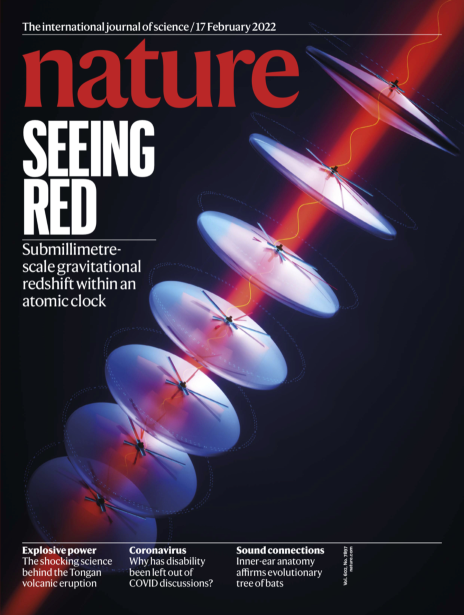Resolving the gravitational redshift across a millimetre-scale atomic sample
| Author | |
|---|---|
| Abstract |
|
| Year of Publication |
2022
|
| Date Published |
2022-01
|
| Journal Title |
Nature
|
| Volume |
602
|
| Issue |
7897
|
| Start Page or Article ID |
420
|
| DOI | |
| URL | |
| Download citation | |
| JILA PI | |
| Publication Highlights |
Cover of Nature Feb. 17 2022 -- SEEING RED
Einstein’s general theory of relativity predicts that Earth’s gravity will sufficiently distort space-time so that clocks at different distances from the planet will tick at different rates — an effect called gravitational redshift. In this week’s issue, Tobias Bothwell, Jun Ye and their colleagues demonstrate this effect at a sub-millimetre scale. The researchers use a cloud of ultracold strontium atoms, effectively creating a series of atomic clocks. As illustrated on the cover, the atoms are trapped in pancake-like optical traps and then interrogated by a laser. The team was able to observe a linear change in frequency — the redshift — from one side of the cloud to the other, showing that each atomic clock was ticking at a slightly different rate. |
| Related Publications | |
| Related JILA Highlights | |
| Associated Institutes | |
Journal Article
|
|
| JILA Topics | |
| Publication Status | |
| Publication Image |

|



